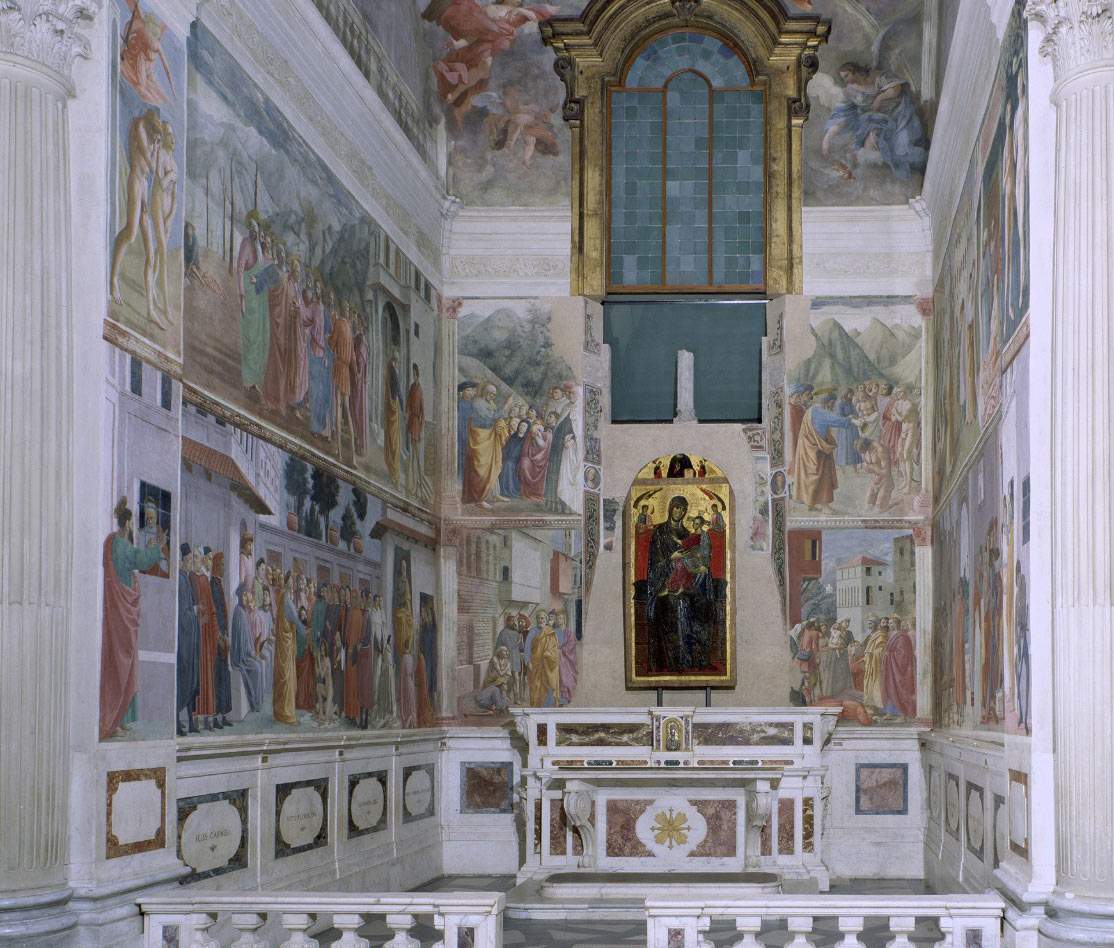Florence, Brancacci Chapel undergoes monitoring work
In Florence, a special monitoring intervention is starting at the Brancacci Chapel, the site inside the church of Santa Maria del Carmine frescoed in the 15th century by Masaccio, Masolino da Panicale and Filippino Lippi: the cycle of frescoes with the stories of St. Peter and the progenitors represents one of the greatest masterpieces of the Renaissance. The Municipality’s technical and fine arts services, in agreement with the Soprintendenza Archeologia, Belle Arti e Paesaggio and the CNR-ISPC of Florence, have already put together a plan to check and control the state of conservation of the space: the frescoes, last restored in the late 1980s thanks to a grant from Olivetti, are in a good state of conservation but need some maintenance checks. The City of Florence is therefore taking advantage of the period when museums are closed for an activity that would not be possible when the Chapel is open.
The monitoring will take place over two weeks until the end of November, and will allow the health of the frescoes to be assessed over time. The operation is part of the scheduled maintenance plan for the monumental heritage approved in 2018 by the City of Florence (the entity to which the Brancacci Chapel is entrusted in concession under the Guerri deed: in fact, the owner is the Fondo Edifici di Culto of the Ministry of the Interior).
The Chapel was founded by the Brancacci family in the late 14th century, and the fresco cycle was commissioned in 1423 by the wealthy merchant Felice Brancacci. Masolino and Masaccio worked on it together, who, however, left the work unfinished in 1427: Masolino in fact left for Hungary, Masaccio for Rome, and they had no way of resuming the work (Masaccio, however, disappeared a few months later). In 1436, Felice Brancacci, who was a fierce anti-Medicean, was exiled from Florence over which the Medici had by then imposed their hegemony for two years, and following this event the friars of the Carmine Convent had the portraits of all the people connected with his family erased. In 1460 the chapel was dedicated to Our Lady of the People, and the 13th-century panel on the altar was inserted. Only in the years 1481-1483 did Filippino Lippi restore the deletions and finish the cycle. Having escaped the fire that devastated the interior of the church in 1771, the chapel was purchased in 1780 by the Riccardi, who renovated the altar and floor. The frescoes, neglected throughout the 19th century, were subjected to a dusting in 1904; restoration work in the 1980s made it possible to recover the precious decorated surfaces.
 |
| Florence, Brancacci Chapel undergoes monitoring work |
Warning: the translation into English of the original Italian article was created using automatic tools. We undertake to review all articles, but we do not guarantee the total absence of inaccuracies in the translation due to the program. You can find the original by clicking on the ITA button. If you find any mistake,please contact us.



























